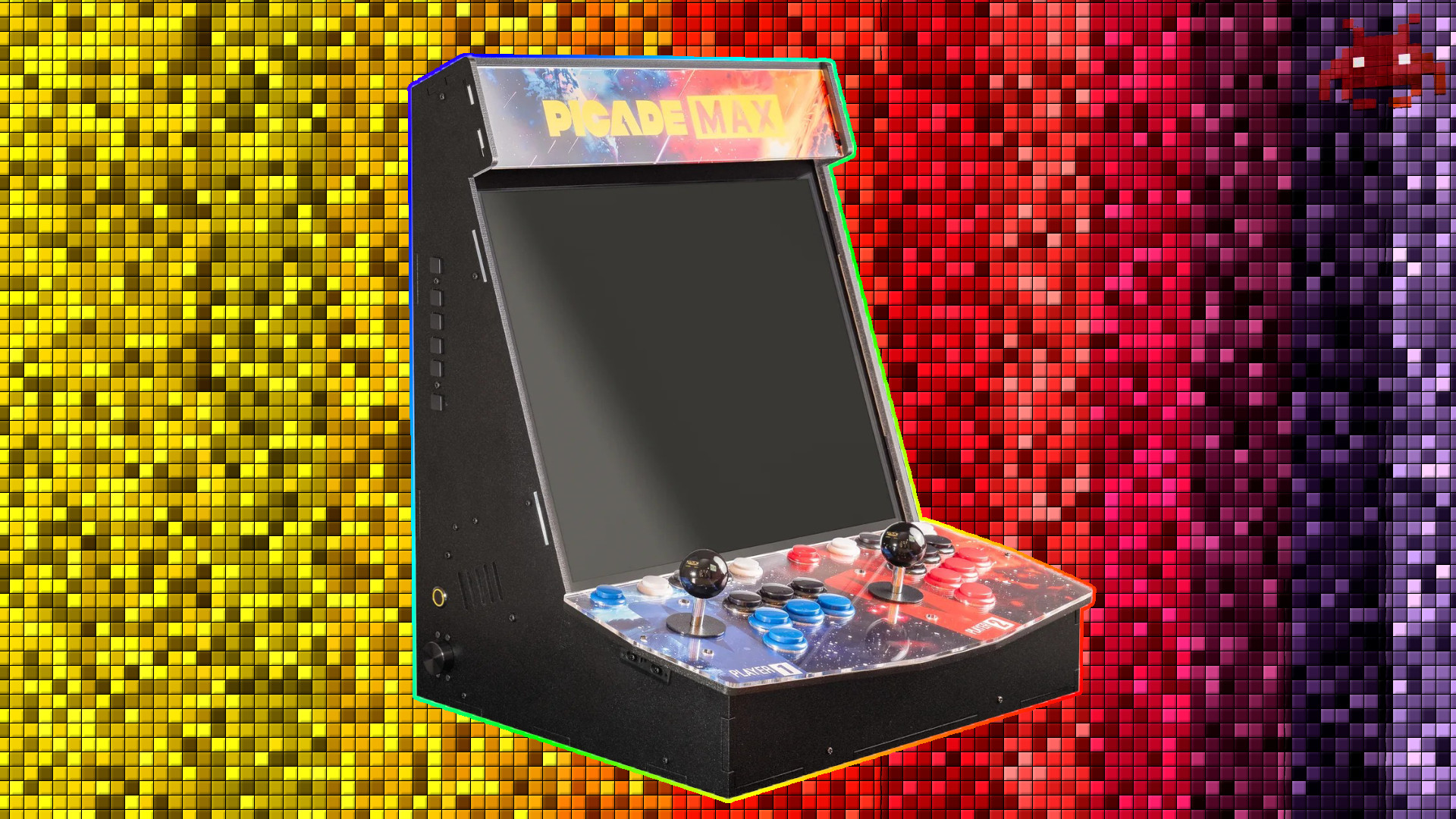
UK-based Raspberry Pi reseller Pimoroni has today announced the beta release of its long-anticipated Picade Max. This two-player cabinet is an upgrade of its previous Picade models and comes with a 19-inch IPS display. Right now, only 50 beta units are going out for £395 ($406 converted). The goal of the limited beta release is to gather feedback on the kit and the build instructions before a full production run is released. The official launch will happen a few weeks later, with a final RRP of £495 ($509 converted).



The Picade Max is made for the Raspberry Pi 5 (but it will work with all 40-pin GPIO models of Pi), and the included add-on boards for sound, controls, and power are designed with the Pi 5 in mind. Just like the older Picades, you’ll need to supply your own Raspberry Pi and storage. Speaking of which, Pimoroni states that the Picade Max is compatible with its NVMe Base, an add-on that brings high-speed NVMe SSDs to the Raspberry Pi 5. With one of these added to the mix, loading even the largest ROM will take no time at all.
What's in the box?
- Black, powder-coated, pre-cut MDF panels (assembled size 511 x 441 x 385mm)
- Two console options with artwork (one or two player layout)
- 2 x joystick with black ball top and push-fit arcade buttons
- 2 x 3" speaker (5W, 4Ω)
- Illuminated power button and volume control dial
- 19" 1280 x 1024 IPS panel with HDMI driver board
- External screen controls keypad
- Picade Max Power HAT
- Picade Max USB Controller Board
- Picade Max USB Audio Board
- 12V power supply
- All needed cables and adaptors
- Grippy rubber feet + fixings
And a little Gamecube emulation. Decent framerate, but I can't get controls to work as I am compiling from source and it throws a QT / Wayland error.Video recorded with no audio. pic.twitter.com/Ip4auYBsHEOctober 3, 2023
With a Raspberry Pi 5 at its heart, Picade Max can emulate up to Nintendo GameCube-era games. Pimoroni are recommending Recalbox as the emulation suite of choice, but you are free to find your own solution.
When the Raspberry Pi 5 was announced in late 2023, we had early access and were able to emulate Sega Dreamcast games such as Jet Set Radio / Jet Grind Radio and Ikaruga at 60fps at 1080P. For Nintendo GameCube games, we managed a steady 30fps on Legend of Zelda Wind Waker, and Metroid Prime. A passable gaming experience was had with Star Wars Rogue Squadron 2 (a game notorious for audio sync issues), which fluctuated between 30 and 60fps. Rogue Squadron 2 even proves a challenge for our Steam Deck.
Should you need a little more “oomph” in your emulation power, there are mounting holes in the cabinet for a mini PC or Mini ITX motherboard and power supply.


The most noticeable feature of the Picade Max is the 19-inch IPS screen. This panel has a resolution of 1280 x 1024, making this a 5:4 aspect ratio display. Ideal for retro gaming. A great screen is nothing without controls. Arcade controls are a divisive topic. Convex or concave button? Microswitches or not? Bat or ball top for the joystick? LEDs or not? Picade Max's default is for low-profile convex arcade buttons and a ball-top joystick. And there are two lots of them! You and a friend can spar in Street Fighter 2, save the world in Contra, or race around dungeons in Gauntlet. The interface between the controls and the Raspberry Pi is the Picade Max Control Board. This board is powered by the RP2040, the same chip that powers the Raspberry Pi Pico, and it can handle up to 24 inputs via DuPont connections. The good news is that the Picade Max Control Board acts just like a regular gamepad/keyboard interface, which means that your favorite emulation solution will need minimal setup.
We’ve got the big new screen and some controls; what else do we need for a great gaming experience? Big sound! Arcade cabinets rely on big speakers and amplifiers to immerse the gamer. With the Picade Max, we have another RP2040-powered board, the Picade Max Audio Board, which sees an RP2040 acting as a USB soundcard with 3W of audio power. A rotary encoder on the back left of the Picade Max provides a tactile means of volume control. No more fiddling with software audio settings.
The power input for Picade Max is handled by the Picade Max Power HAT. Plug in the included 12V PSU, and the Power HAT will supply the correct voltages to the plethora of Pi-based devices and arcade components that lie in the cabinet.
The cabinet itself measures 511 x 441 x 385mm (H x W x D) and is made from 6mm thick MDF, which has been powder-coated to resemble the finish of a retro arcade cabinet. The same process was applied to older Picade cabinets, and owning two of them; I can confirm that there are no issues with my cabinets.
Picade Max is a stunning cabinet, but come on, you want to make it your own! I tweaked both of my Picades to have different buttons and a fetching neon pink bat for the joystick. With Picade Max we can add a large rear mounted fan, plenty of cooling for the Pi and Picade Max components. But perhaps the most exciting prospect is replacing the marquee (the top most part of the cabinet) with a Galactic Unicorn. Yes, you can have scrolling text, animations and any other arcade aesthetics blasting out of the 583 RGB pixels of the Galactic Unicorn.
Game creators will also enjoy the bonus Pico-8 license. Using Pico-8 you will be able to make your own 8-bit games and demos.
The initial run of 50 beta units is for those makers that like early access to a product and want to help it succeed by providing feedback to Pimoroni, hence the £100 / $103 price reduction. We’ll receive a beta unit for review and have our review done as soon as possible.







